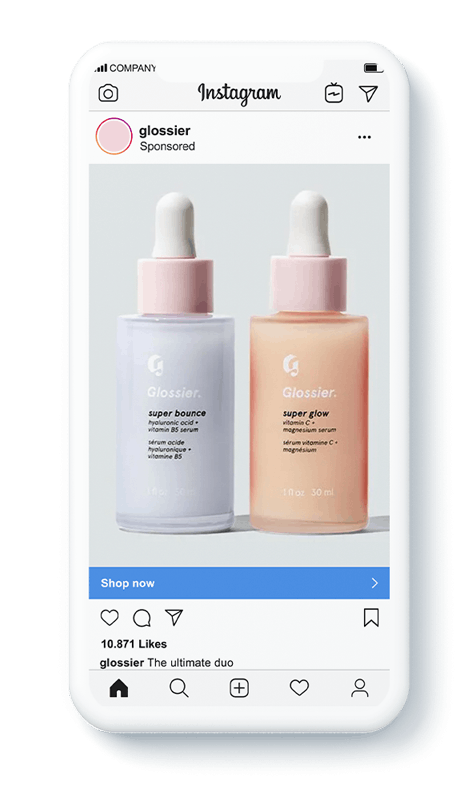


Brands need to evolve with new ad formats. Are Interactive ads the next big thing?
 Joshua Andrews
Joshua Andrews Go back over a decade and if I asked you to give me an example of advertising — you’d have most likely mentioned the giant digital billboards you whizzed past in your car. Today, we’ve gone mobile and largely live online. We sometimes forget why billboards were, and sometimes still are such a popular advertising format.
In a nutshell, billboards can put information in front of consumers digitally, stay in people’s memories and influence shopping decisions.
But of course, billboards can only be accountable for so much, and how many cars passed by was just not gonna cut it for brands as a KPI. There’s also the fact that digital billboards caused no emotion, no trust and no way to prove ROI or prove how successful they really were.
So along came the digital ads. A cheaper, faster way to create pocket-sized billboards that could be tracked, measured and targeted to a specific audience. It’s not hard to tell why businesses from all industries went mad for them.

Now years later, it’s hard to find a quiet corner of the internet where digital ads are not present across the content you consume. We’ve been over-exposed to a sea of never-ending pop-ups and digital ads, all with the suspicious feeling our activity is being monitored as we are served tailored ads respective to the items we recently viewed online. No wonder consumers now, especially younger generations, are becoming more and more desensitized to digital ads.
So what can brands do to shake up their advertising budget and create more meaningful and engaging marketing content? Many marketing content alternatives have become available for the past few years, from disruptive activation marketing campaigns cooked up in big-budget advertising agencies to user-generated content and AI tech.
All of these have the same thing in common that their advertising predecessors did not. The ability to interact with consumers.
A quick intro to Interactive Advertising
Yes, interactive advertising has become a game-changer. According to Votion, people retain information, are more appealed to take action and are more likely to become loyal to brands who make their customers interact with their advertising campaigns or communications strategies.
Let’s dive a little deeper.
Digital Marketers are aware of the power of Interactive advertising. 79% of digital marketers think that interactive content increases the number of visitors who come back to a digital ad or to the ad’s post-click page. 88% also agree that interactive marketing content is helping them stand out from the competition and 70% have seen effective conversion rate on website visitors that landed there from an interactive ad.
But, what does an interactive ad look like?
If your digital ad is turning your target audience to take part in an activity rather than just view the digital ad passively, then your ad is an interactive one. And you don’t have to go full Augmented Reality to take advantage of interactive ads, here are some easy, accessible ways to go interactive:
- Quizzes
- Filters
- QR codes
- Polls
- Open questions
An Interactive example: Glossier
Take a look at a DTC giant, beauty brand Glossier. We want to do a quick review at their advertisement proposition from digital billboards to social media feed to their viral, disruptive and interactive advertisement strategies.
Glossier is no stranger to the digital billboard. Still today, they use them in every major city to reinforce their online branding campaigns, like Feeling like Glossier.
Social media sponsored ads. It’s true Glossier’s success relied heavily on Instagram back in 2014 by pioneering as a cult brand on the social media platform. So it’s no surprise that they invest in paid advertising exactly where their core consumers hang out.
Quizzes. Glossier knows their customer very well, so now and then, they send out interactive quizzes for shoppers to either engage or to learn from the brand.
Filters. A crowd favourite was the recent Instagram filter they used to launch Hand Cream. By releasing a filter that mocked the exact product on customers screens, Glossier piqued interest and gained organic word of mouth buzz.
What can this solve for DTC brands?
DTC brands should be finding new, disruptive digital marketing solutions to become more customer-centric and to be creative enough to stand out from the competition. With this in mind, they’ll be able to build strong relationships and loyalty with their consumers because audiences have become increasingly sensitive to brands who listen and create fun, interactive experiences.
Engaged consumers will then have a bigger motivation to organically talk about your product on your behalf, be more naturally convinced about your product's proposition and therefore be genuinely interested in signing up for your newsletter, waitlist or even take part in your survey.
I’m a DTC brand, where can I start?
Turn your viewers into active participators, with simple and affordable tools, available for every DTC brand manager such as tapkit.
No big agency fees, no complicated code and with an amazing user experience platform, recreating an interactive ad like Glossier is a no brainer. We even made a mock-up experience https://fara.fun/glossier to show how Glossier could take their interactive online quizzes to the next level by going mobile with tapkit.

Want to build something interactive for your brand? We want to help! We’re a friendly bunch here at Tapkit, ping us an email to get introduced - hello@tapkit.com





